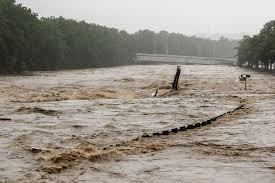Flash flooding is one of the most dangerous types of natural disasters. Every state has flash floods on occasion, and because they are somewhat unpredictable and may seem like they are not a significant problem, they can surprise people with their speed and strength. With the following information, people will understand why flash flooding is so dangerous.
Speed
A mass of unexpected water is a danger in any case, but the speed of a flash flood makes it deadly. Flash floods move at various speeds, depending on the origin and time since the flood began. Speeds can reach up to nine feet per second and keep pace for hours. At this speed, a flash flood of a moderate depth could move light debris more than 500 feet per minute.
For people, the major risk of a flood is crossing it. Standing in six inches of water in a quiet pond is much easier to move or stay upright than walking across a fast-moving river of flood water. Experts recommend that people avoid entering the water, even if it seems shallow, for the risk of losing balance and drowning.
Depth
A flash flood does not have to be very deep to become dangerous. Experts estimate flash floods can rush through an area with a height of 10 to 20 feet, depending on the flood's cause. This wall of water carries a sea of damage with it. It can uproot trees, erode soil, or roll boulders and debris. It is not uncommon for high flood water levels to move vehicles easily.
Small streams of water can cause damage and increase risk in little time. Because a flash flood moves very quickly, it can knock a human over in six inches or fewer of flowing water. It only takes about two feet of flooding depth to turn a car into an uncontrollable piece of debris.
Debris
Flash flooding tends to carry debris, which can be risky to people and especially waterfront property in the flood's path. Most debris will be light at first, mostly limited to dirt, bushes, and small trees. However, as the flood increases in depth, the movement can change dramatically. It is not unlikely for flooding to dislodge boulders and deposit them elsewhere or push cars out of their parking spots.
The longer the flooding lasts, the higher the likelihood of damage to larger structures. Buildings surrounded by flooding water for days may detach from their foundations. If they are light enough, they can become their own hazard on the water. Floating debris can hinder rescue efforts or even injure people.

Contamination
Flood water is significantly different in quality from water that flows through a faucet. Because it is not tested or treated, flood waters are likely contaminated. Flood water can be filled with a variety of contaminants, including:
-
Industrial solvents
-
Household poisons
-
Untreated sewage
-
Petroleum products, like gasoline or oil
-
Waterborne diseases, like Giardia or Legionella
Water can be an effective carrier of toxins, making it more difficult for people to avoid exposure if they enter the water. Even a brief exposure of a few minutes could lead to long-term illnesses or poisoning absorbed through the skin. Because it is impossible to determine all the contaminants in flood water, experts recommend people minimize contact with the water as much as possible.
Damage
Flash flooding can cause a lot of damage within a few hours. It is not uncommon for a flood to turn a home into an uninhabitable structure that cannot be repaired. One of the key risks of this destruction is the dangerous situations created by the damage.
Flood water entering a home can increase the risk that its systems will no longer contain themselves. Even brief flooding can lead to safety hazards such as sewer backflow, exposed electrical wiring, or gas leaks.
For property owners who want to repair their homes, worries about water damage can linger for months afterward. Permanent structures submerged in water and insufficiently dried can grow mold, causing potential health problems for the people living there. Experts recommend residents take care when entering the property and wait until local authorities say the area is safe.

Understand the Dangers of Flash Flooding
Minimizing the risks related to flash flooding starts with an understanding of the dangers present in fast-moving water. Those who underestimate the effects of a flash flood are more likely to enter a situation they cannot control. Knowing what can happen during a flash flood makes it easier for people to avoid getting into trouble.



















